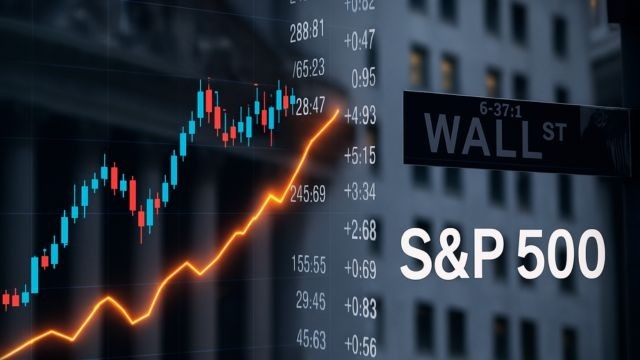After a temporary slowdown during the high-inflation years of 2022–2023, corporate stock buybacks are roaring back in 2025.
From tech giants like Apple and Meta to industrial leaders and energy firms, U.S. and European companies are once again allocating hundreds of billions of dollars to repurchase their own shares.
For investors, this resurgence raises an important question:
Are buybacks a sign of strength — or a warning signal?
To answer that, we need to understand why buybacks are accelerating right now, what they reveal about corporate confidence, and how they shape long-term market performance.
What Are Stock Buybacks? A Quick Refresher
A stock buyback, or share repurchase, occurs when a company buys its own shares on the open market.
This reduces the number of shares in circulation, which often boosts:
- earnings per share (EPS),
- stock price stability,
- demand from institutional investors, and
- management confidence signals.
Buybacks have become one of the dominant forms of capital allocation in the last two decades — sometimes even exceeding dividend payments.
Why Buybacks Are Surging in 2025
1. Massive Corporate Cash Reserves
Despite high interest rates, many large corporations have accumulated record amounts of cash due to:
- strong 2024 earnings,
- cost-cutting and automation efforts,
- margin expansion from AI-driven efficiencies.
This gives them the liquidity needed to restart buyback programs aggressively.
2. Stabilizing Interest Rates
Although rates remain elevated, central banks are signaling gradual cuts heading into 2026.
This gives CFOs confidence to deploy capital rather than hoard it.
3. Limited Opportunities for Expansion
In a slow-growth environment, many companies see fewer high-ROI investment opportunities.
Instead of pursuing risky acquisitions or speculative projects, they choose to return capital to shareholders.
4. Institutional Investor Pressure
Pension funds, hedge funds, and large asset managers consistently push for buybacks as:
- they boost EPS,
- reduce share float,
- and create stable upward price pressure.
5. Political & Regulatory Green Light
Some analysts expected strict regulations after the 2020s buyback boom, but legislation stalled.
The U.S. 1% buyback tax (introduced in 2023) has done little to slow corporate enthusiasm — companies simply see it as a minor cost of doing business.
Which Sectors Are Leading the Buyback Boom?
🔹 Technology (unsurprisingly)
Cash-rich tech giants are once again dominating buybacks.
Companies like Apple, Google, Meta, and Microsoft continue to deploy tens of billions annually.
AI and cloud margins remain extremely high, giving tech firms more flexibility than almost any other industry.
🔹 Energy & Commodities
Oil and gas profits remain elevated due to lasting supply constraints and geopolitical instability.
These firms are using buybacks to reward shareholders during a period of high revenue volatility.
🔹 Financials
Banks and insurers, benefiting from high-rate revenue streams, are increasingly returning capital through buybacks rather than keeping excess reserves.
🔹 Industrials
Many industrial firms are cutting costs through automation, freeing up cash for stock repurchases — especially companies in robotics, logistics, and aerospace.
Are Buybacks Good for Investors?
The answer is… mostly yes, but with important caveats.
👍 Buybacks can be a sign of strength
Companies repurchase shares when:
- they believe the stock is undervalued,
- they want to boost investor confidence,
- they expect stable long-term earnings,
- or they simply have excess cash.
This generally benefits long-term investors.
👍 Buybacks support stock prices
Reducing share supply often boosts:
- stock valuation metrics,
- shareholder demand,
- and psychological confidence among institutional investors.
👍 They are tax-efficient compared to dividends
Dividends are taxed immediately.
Buybacks gradually increase share value — allowing investors to choose when to realize gains.
But Not All Buybacks Are Created Equal
⚠️ Some buybacks mask weak business performance
When companies use buybacks to artificially boost EPS instead of improving fundamentals, it can mislead investors.
⚠️ Buybacks at peak valuations destroy shareholder value
Buying back expensive stock is like overpaying for your own house — and some companies do this regularly.
⚠️ Buybacks reduce liquidity buffers during crises
Excessive buybacks can leave companies short on cash when unexpected downturns hit.
⚠️ High levels of executive compensation tied to EPS can create conflicts
Management may use buybacks to inflate performance bonuses, not shareholder value.
The key is understanding why a company is buying back shares — not just the fact that it is.
What This Trend Means for the Stock Market
The return of large-scale buybacks has several implications for investors:
1. More Stability in Major Indexes
Buybacks provide constant buying pressure, particularly in:
- S&P 500
- Nasdaq 100
- Dow Jones

This stabilizes prices during volatility spikes.
2. Tech Becomes Even More Dominant
Tech firms already account for a massive portion of index weightings.
Large buyback programs amplify this dominance, making market performance increasingly dependent on a handful of mega-cap giants.
3. More Predictable Earnings Seasons
EPS tends to be smoother when share float decreases — making earnings beats more predictable.
4. Long-Term Investors Benefit the Most
Buybacks reward patience.
Those holding shares long-term capture the compounded benefit of reduced float + rising valuations.
How Investors Should Approach Buyback-Heavy Companies
1. Look at the buyback history
Consistent, long-term buyback behavior is usually a sign of disciplined management.
2. Evaluate whether the company is overpaying
Compare buyback levels to valuation metrics:
- P/E ratios
- price-to-free-cash-flow
- growth projections
Buying back during overpriced markets is a red flag.
3. Ensure the balance sheet is still healthy
Strong buyback activity should not come at the expense of:
- cash reserves
- debt repayment
- operational investment
- R&D budgets
4. Watch for executive compensation incentives
If bonuses depend heavily on EPS growth, buybacks may be driven by internal motivations, not long-term strategy.
Conclusion: Buybacks Are Back — And They’re Reshaping 2025 Markets
Corporate buybacks in 2025 reflect a market environment where:
- companies are cash-rich,
- growth opportunities are limited,
- interest rates are stabilizing,
- and investors crave stability.
While not perfect, buybacks remain one of the most powerful tools for returning shareholder value — when used responsibly.
For long-term investors, understanding this trend is key to identifying companies that are truly committed to sustainable value creation.
Buybacks aren’t just a financial tactic anymore.
They’re a signal — a message about confidence, discipline, and the future.
Related Post
“Gold vs. Tech Stocks: Where Smart Money Is Moving in 2025”
